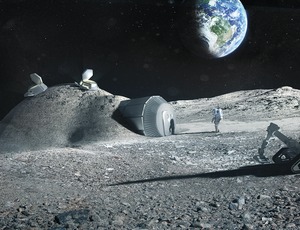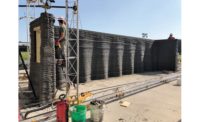
Concrete printing in 3D has a future in the near term, with commercial applications coming in a couple of years, predict researchers in the U.K.
Richard Buswell, senior lecturer in building-services engineering at Loughborough University, spent four years on a team developing a computer-controlled process for producing complicated concrete elements not possible by traditional means. The $2-million project, completed in 2011, produced a series of 1-meter-sq, curved panels with internal voids, made with high-strength mortar extruded and placed with a three-axis frame.
Buswell's team now aims to increase production by mounting the printer head on a seven-axis robotic arm. They are seeking a commercial industrial partner, he says.
Co-researcher and architectural firm Foster + Partners, London, has studied 3D printing for a decade, says associate director Xavier de Kestelier. He represented Foster on a European Space Agency project, completed last year, designing a shelter for lunar travellers. It comprises a load-bearing dome of impact-resistant cellular concrete.
The ESA team printed a 3,300-lb test block of figured concrete using "D-Shape" technology, owned by Dinitech S.p.A., Pisa, Italy.
In lunar use, printers would place layers of regolith—the dust and broken rock on the moon's surface—on an inflatable formwork while injecting it with a liquid binder of undisclosed composition. De Kestelier now wants to bring the technology "back to Earth." Like Buswell, he also believes 3D concrete printing will soon find commercial uses.







Post a comment to this article
Report Abusive Comment